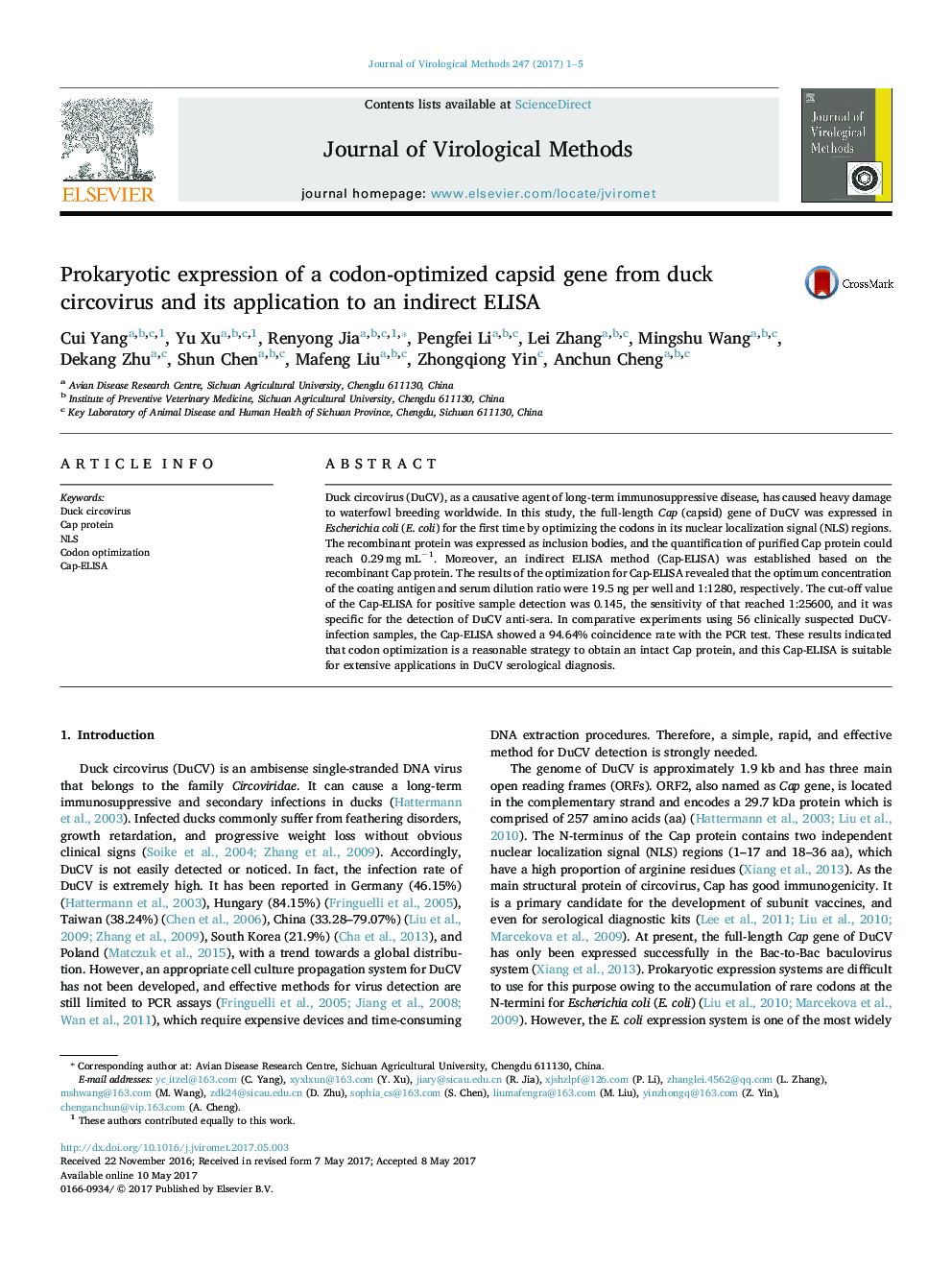| Article ID | Journal | Published Year | Pages | File Type |
|---|---|---|---|---|
| 5673027 | Journal of Virological Methods | 2017 | 5 Pages |
Abstract
Duck circovirus (DuCV), as a causative agent of long-term immunosuppressive disease, has caused heavy damage to waterfowl breeding worldwide. In this study, the full-length Cap (capsid) gene of DuCV was expressed in Escherichia coli (E. coli) for the first time by optimizing the codons in its nuclear localization signal (NLS) regions. The recombinant protein was expressed as inclusion bodies, and the quantification of purified Cap protein could reach 0.29 mg mLâ1. Moreover, an indirect ELISA method (Cap-ELISA) was established based on the recombinant Cap protein. The results of the optimization for Cap-ELISA revealed that the optimum concentration of the coating antigen and serum dilution ratio were 19.5 ng per well and 1:1280, respectively. The cut-off value of the Cap-ELISA for positive sample detection was 0.145, the sensitivity of that reached 1:25600, and it was specific for the detection of DuCV anti-sera. In comparative experiments using 56 clinically suspected DuCV-infection samples, the Cap-ELISA showed a 94.64% coincidence rate with the PCR test. These results indicated that codon optimization is a reasonable strategy to obtain an intact Cap protein, and this Cap-ELISA is suitable for extensive applications in DuCV serological diagnosis.
Related Topics
Life Sciences
Immunology and Microbiology
Virology
Authors
Cui Yang, Yu Xu, Renyong Jia, Pengfei Li, Lei Zhang, Mingshu Wang, Dekang Zhu, Shun Chen, Mafeng Liu, Zhongqiong Yin, Anchun Cheng,
